Creature Feature
Explore some of the marine life living at Gray's Reef National Marine Sanctuary including some fun facts about how they form the live-bottom habitats of the southeast United States.
Visit this NOAA Oceans of Possibilities page for coloring pages, puzzles, activities, and games.
Invertebrates
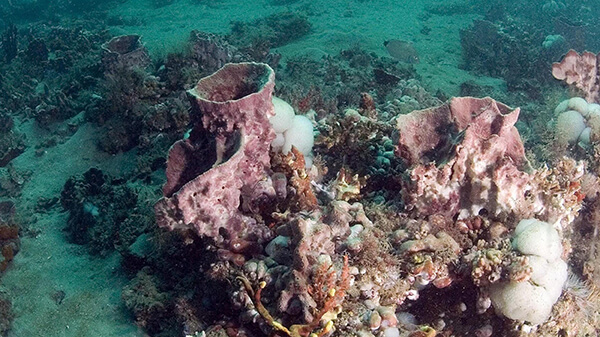
Coming in all shapes and sizes, these animals form colonies providing food, shelter, and water filtration. Photo: Greg McFall/NOAA
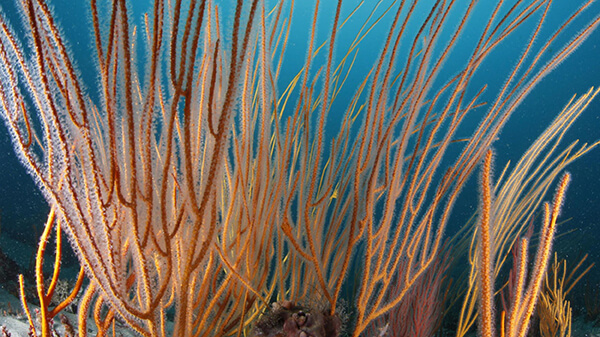
Soft corals—or octocorals—grow upwards into the flowing currents to catch drifting food particles. Photo: Greg McFall/NOAA
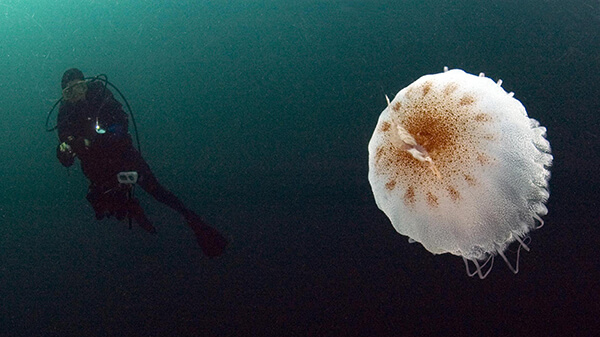
Cannonball jellies (shown here) and Atlantic sea nettles drift with currents and provide a home for some fish and shrimp species. Photo: Greg McFall/NOAA
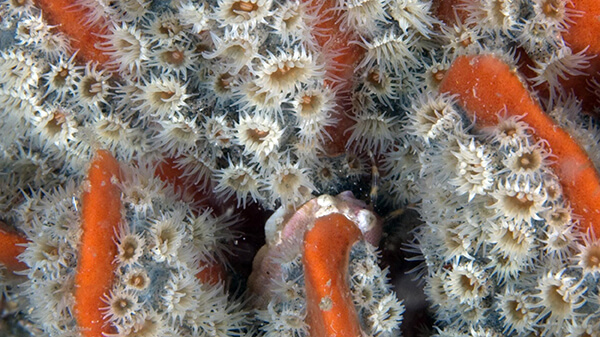
These soft-bodied corals sometimes cover large areas of the reef. Photo: Greg McFall/NOAA
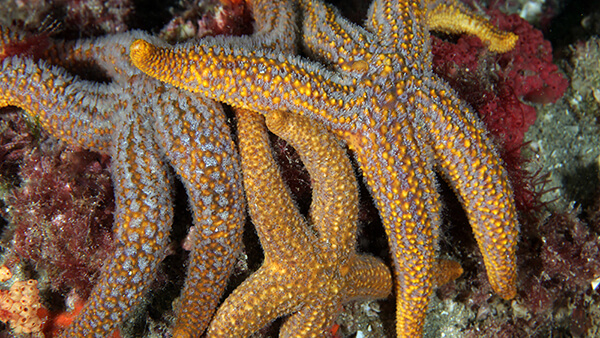
Sea stars typically have five rays extending from a central disc and use their tube feet to move around the seafloor and eat. They feed on clams, snails, and mussels. Photo: Greg McFall/NOAA
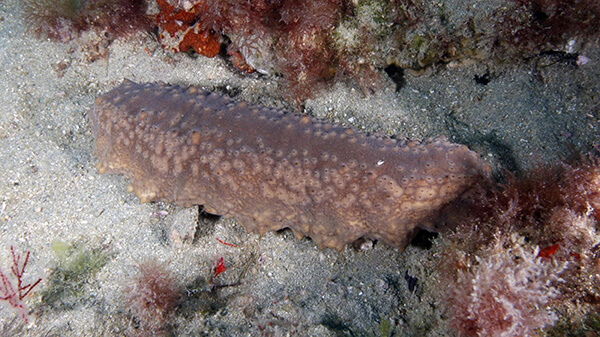
Sea cucumbers scavenge the seafloor and keep the bottom clear of dead or dying material—which is important for the oxygenation of sediments. Photo: Greg McFall/NOAA
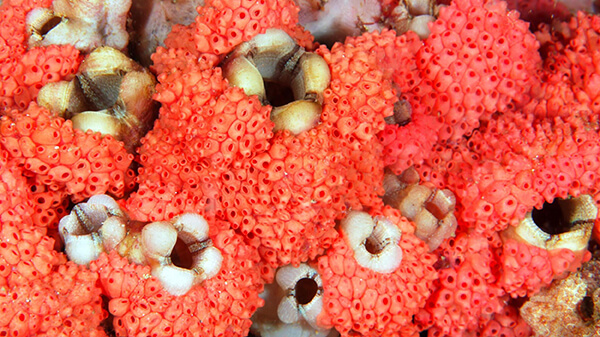
Commonly known as "sea squirts," tunicates pump water through their bodies while filtering for phytoplankton. Although tunicates are invertebrates, they belong to the Phylum Chordata, which also includes animals with backbones. Photo: Greg McFall/NOAA
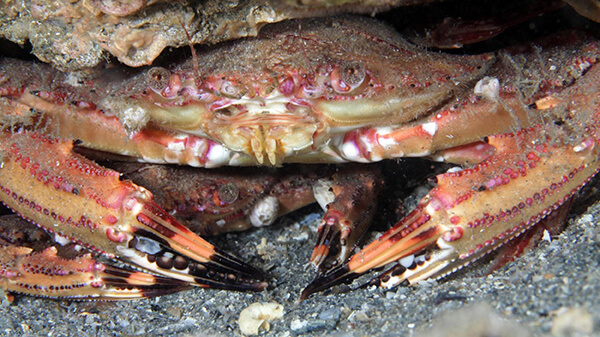
Crabs live from the coastal marsh to offshore reefs. Crabs help keep the reef clean of loose debris. Photo: Greg McFall/NOAA
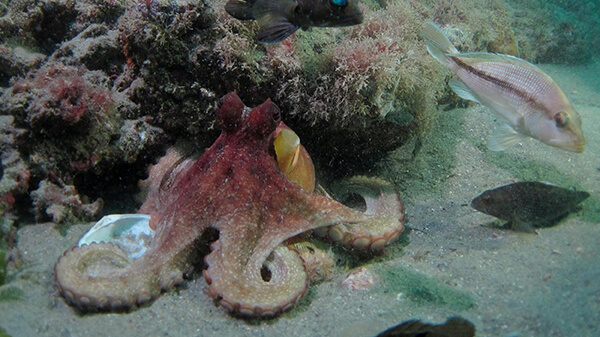
These eight-armed creatures are one of the cryptic species of the reef. Divers find them hiding in their dens within crevices or holes. Photo: Peter Auster/University of Connecticut & Mystic Aquarium
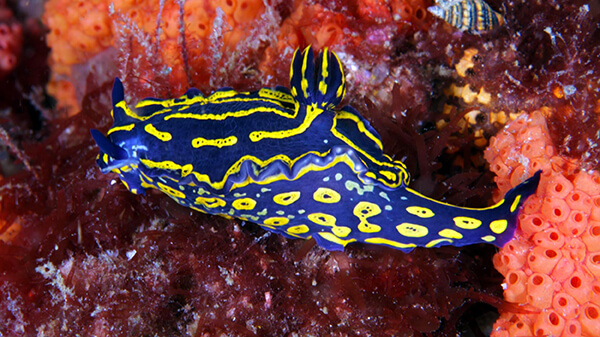
A type of sea slug, nudibranchs use exposed gills, usually located on their back, to breathe. Photo: Greg McFall/NOAA
Fishes
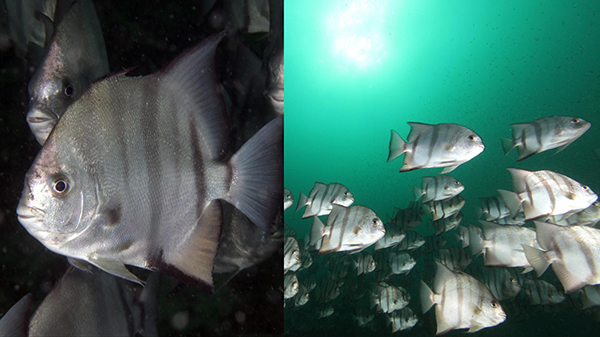
Often called the Gray's Reef "welcoming party," schools of Atlantic spadefish swim throughout the sanctuary. Photo: Greg McFall/NOAA
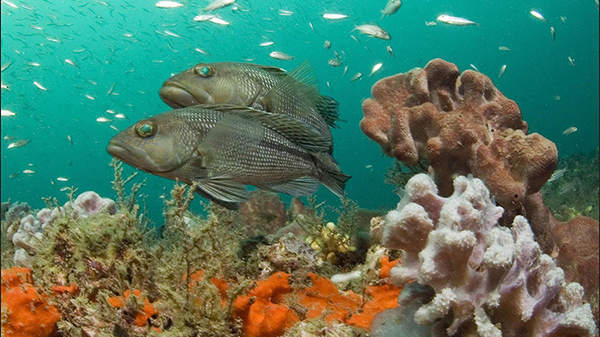
Sanctuary scientists study the movement and migration of black sea bass using several methods, including hydrophones (underwater microphones). Photo: Greg McFall/NOAA
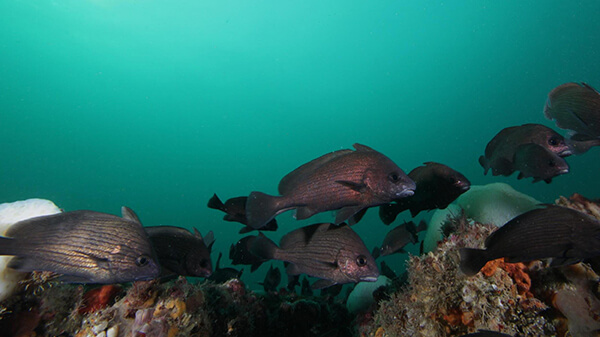
Moving in large schools close to the seafloor, cubbyu (pronounced "CUB-you") search for small crabs and shrimp. Photo: Greg McFall/NOAA
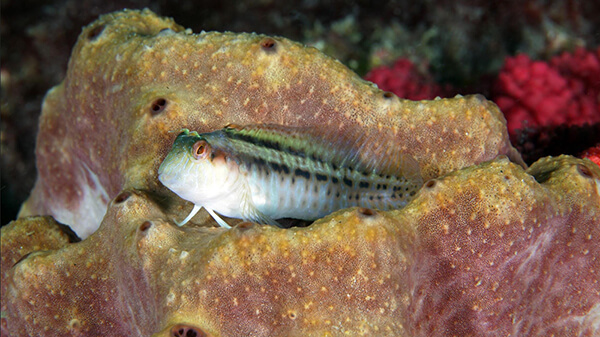
Scientists use the term "cryptic fish" to describe blennies and other fish, which remain hidden on the reef. Photo: Greg McFall/NOAA
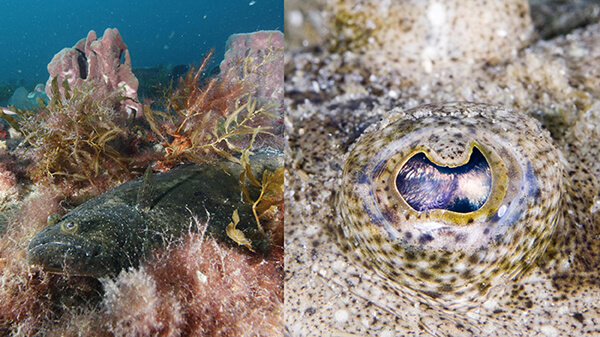
Flounder typically lay flat in sand for camouflage. With two eyes on one side of their body, they wait to ambush smaller fish. Photo: Greg McFall/NOAA
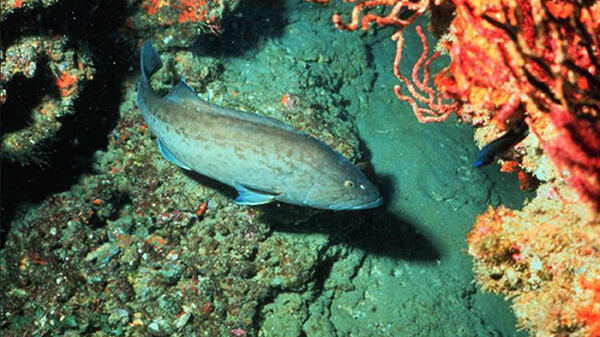
Most grouper species are protogynous hermaphrodites, meaning they hatch as females and individuals change to males when there is a need. Photo: NOAA
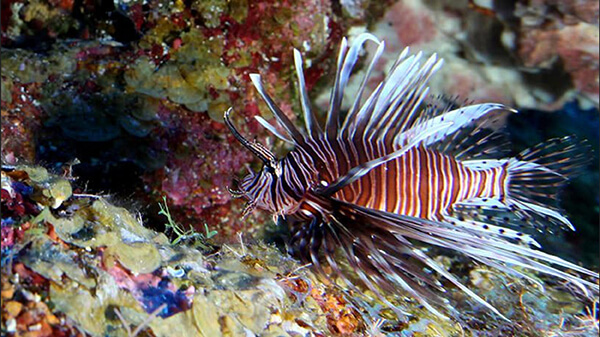
Venomous
Invasive lionfish were first seen at Gray's Reef in 2007. Their hungry appetite for juvenile fish has major impacts on the reef's food web. Photo: NOAA
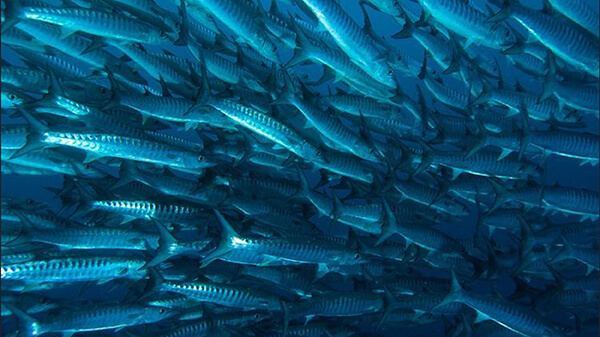
School of fast-moving mackerel roam through Gray's Reef and anglers frequent the sanctuary during tournaments. Photo: NOAA
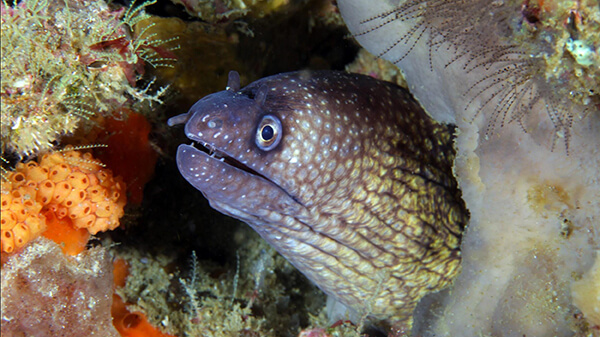
Eels are a type of long-bodied fish often found hiding in holes and under ledges. Photo: Greg McFall/NOAA
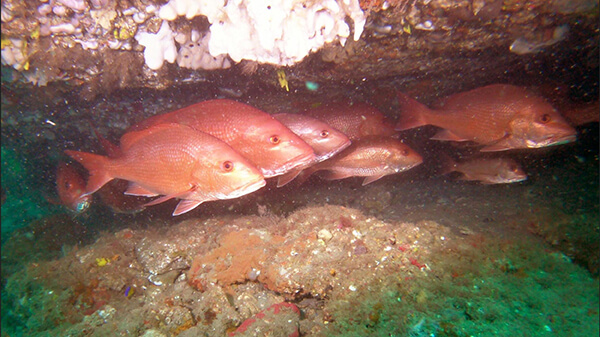
U.S. wild-caught red snapper is a smart seafood choice because it is sustainably managed under rebuilding plans that allow limited harvest by U.S. anglers. Photo: Justin Miyano/NOAA
Sharks
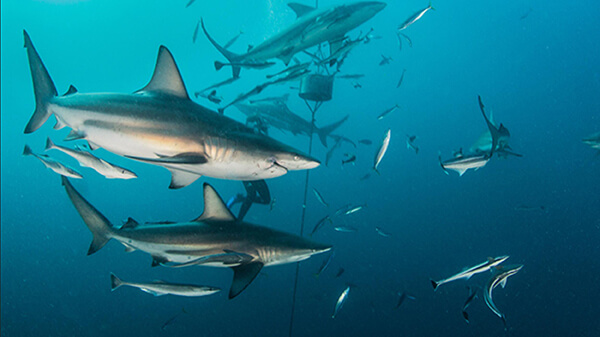
Individual blacktip sharks have frequented the sanctuary for consecutive years, some even showing up on the same day in different years. Photo: NOAA
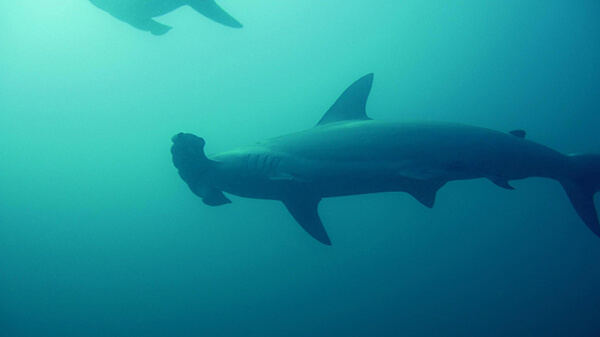
Great hammerhead sharks are identifiable by their tall dorsal fin. Photo: Mitchell Tartt/NOAA
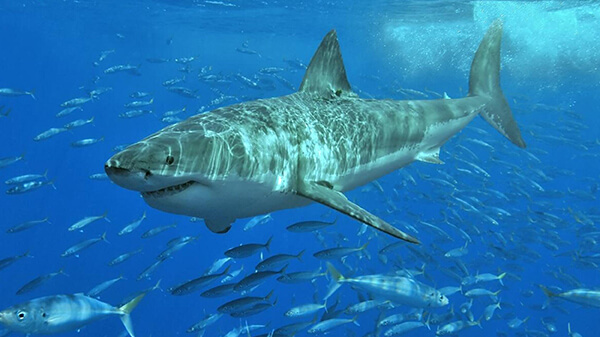
White sharks make long transits around the Atlantic Ocean, occasionally passing through Gray's Reef National Marine Sanctuary. Photo: Terry Goss/NOAA
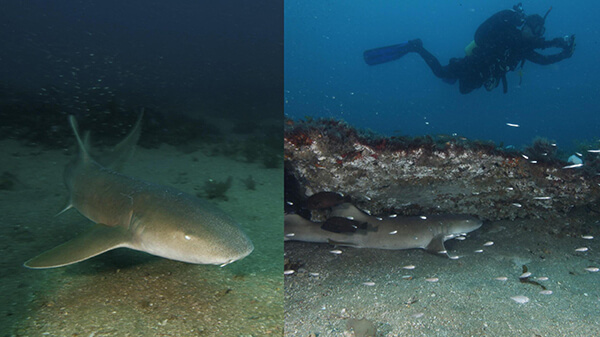
Nurse sharks are the most common shark seen at Gray's Reef. Oftentimes they rest under the overhangs of the reef ledges. Photo: Greg McFall/NOAA
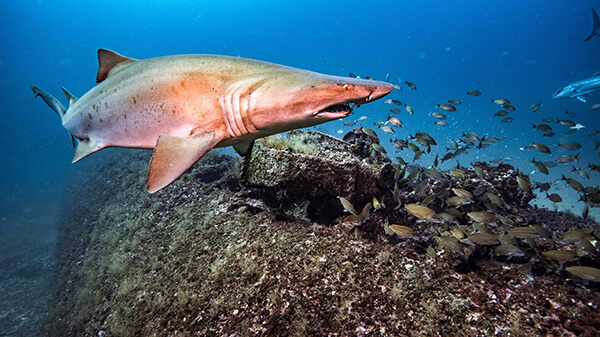
The sand tiger shark is the only known shark that stores air in its stomach to maintain neutral buoyancy. Photo: Tane Casserley/NOAA
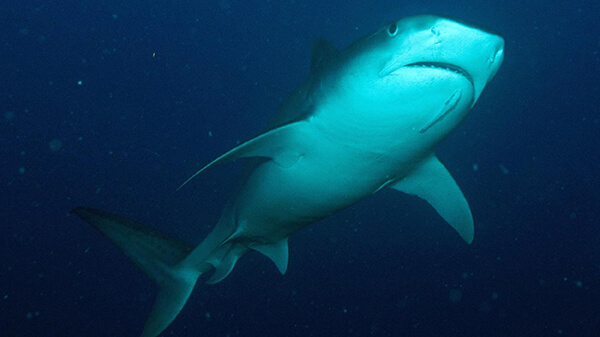
Tiger sharks traveling through Gray's Reef have been picked up by acoustic receivers as part of the Decade of Detections report. Photo: G.P. Schmahl/NOAA
Sea Turtles
Did you know: All sea turtles are considered endangered species?
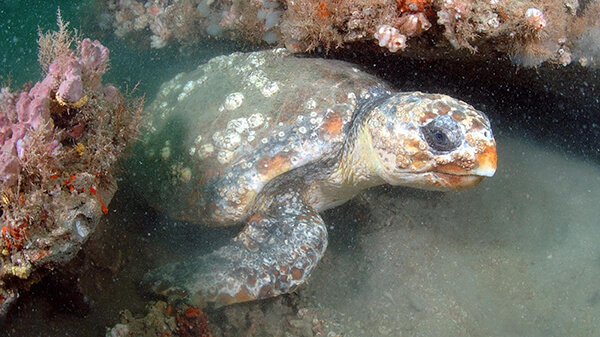
Loggerheads are the most common sea turtle seen at Gray's Reef, but the southeast U.S. populations have declined due to bycatch in fishing gear. Photo: Greg McFall/NOAA
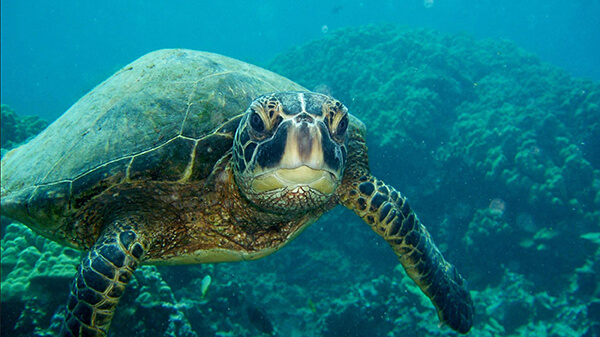
The green sea turtle is unique among sea turtles in that they are herbivores, eating mostly seagrasses and algae. Photo: Claire Fackler/NOAA
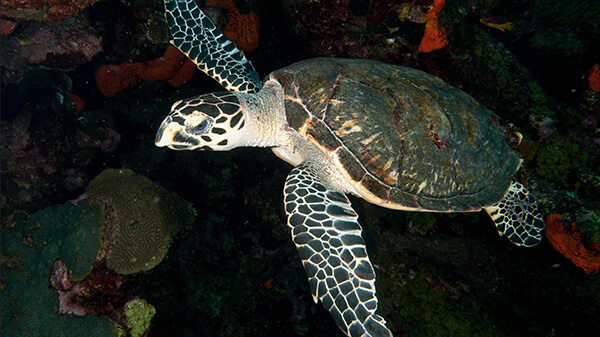
Hawksbills are known as "spongivores" because their diet consists mainly of sponges. Photo: G.P. Schmahl/NOAA
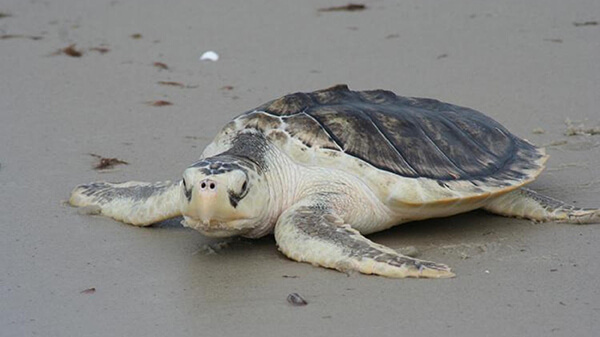
Kemp's ridley sea turtles are the smallest sea turtle in the world with a majority of their population in the Gulf of Mexico. Photo: NOAA
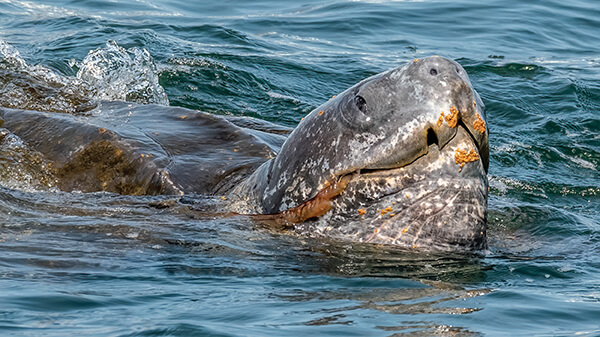
Leatherbacks are the largest sea turtle in the world (weighing up to 1,000 lbs) and can dive to depths of 4,000 ft. Photo: Douglas Croft/NOAA
Marine Mammals
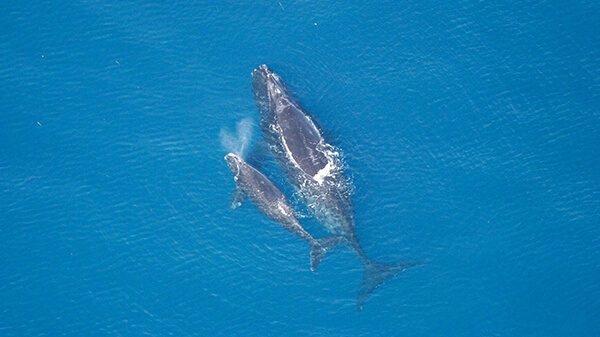
Gray's Reef is within the winter calving grounds of these critically endangered whales. Less than 400 individuals remain. Photo: NOAA
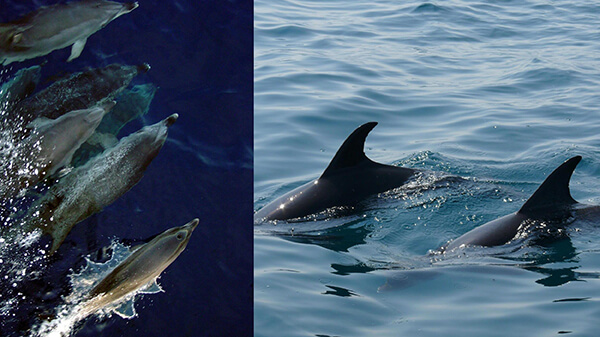
Atlantic spotted dolphin are fast swimmers and often "surf" in the waves created by vessels. Photos: NOAA
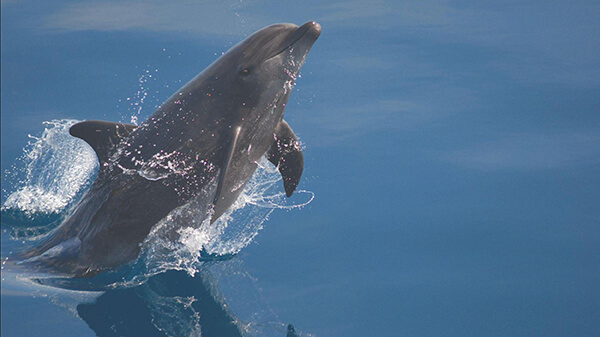
Bottlenose dolphins in the U.S. are not endangered or threatened, but they are protected under the Marine Mammal Protection Act. Photo: NOAA

